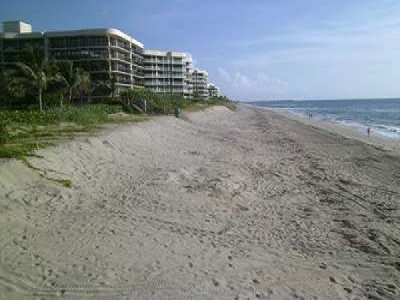
Posted on July 25, 2016
By Aleese Kopf, Palm Beach Daily News
Residents had their last chance this week to comment on an environmental study that will help determine what type of shore protection the town will pursue along its southernmost beaches.
By November, they could hear details about a plan to place more sand on the beach and in the water in Reach 8, which extends from The Ambassador Hotel to La Bonne Vie.
On Monday, the U.S. Army Corps of Engineers ended the 30-day public comment period for its final environmental impact statement analyzing a 2.07-mile stretch of coastline from Palm Beach to Manalapan. The area encompasses the island’s Reach 8.
The town’s consultant submitted a brief letter Friday stating the study adequately addresses staff’s questions from the draft document published in December 2014. Many of those questions had to do with modeling, technical analysis and data calculations. The town also wanted the Corps to evaluate different sand sources and grain sizes in the final document. The federal study began three years ago.
The study evaluates several possible sand projects and how each would affect marine life and environmental resources. The Corps doesn’t grade or recommend projects but uses the study to determine whether to issue or deny federal permits. The study also is a guide for state permitting.
“There’s a matrix of alternatives that the EIS evaluates and it’s a balancing act between benefit and impact,” Public Works Director Paul Brazil recently told the Town Council. “There are three viable alternatives for the town that they evaluated in-depth.”
The town’s preferred project is to place 65,200 cubic yards of dredged sand. The Corps developed an alternative that would increase the sand volume to 121,700 cubic yards, and the Coalition to Save Our Shoreline proposed a plan to add 253,100 cubic yards of sand and place two sand-trapping groin structures.
Councilwoman Danielle Moore asked Brazil if he anticipates trouble getting a permit for any of the alternatives.
“The town’s preferred alternative is the most likely to be permitted,” he said. “I think we’ll see some amount of pushback for the Corps’ alternative that includes more sand, more mitigation.”
He said the coalition’s project “would be extraordinarily challenging to get a permit for.”
The cost of each alternative varies depending on the amount of sand and mitigation requirements. Generally, more sand means the project will provide better protection and last longer. But it also means the project has more environmental impacts, requires more mitigation, and therefore is more expensive and less likely to get permitted.
“The bottom line is going to be a choice based on cost and mitigation, and long-term indirect impacts as well,” said Mayor Gail Coniglio.
Brazil said he expects the Corps to publish a “record of decision,” a statement listing its final findings, in September. He said he plans to present that information to the Shore Protection Board in October. Shore board members will review it and recommend a project to the Town Council to discuss in November.
Source: Palm Beach Daily NewsPatrician Condominium





